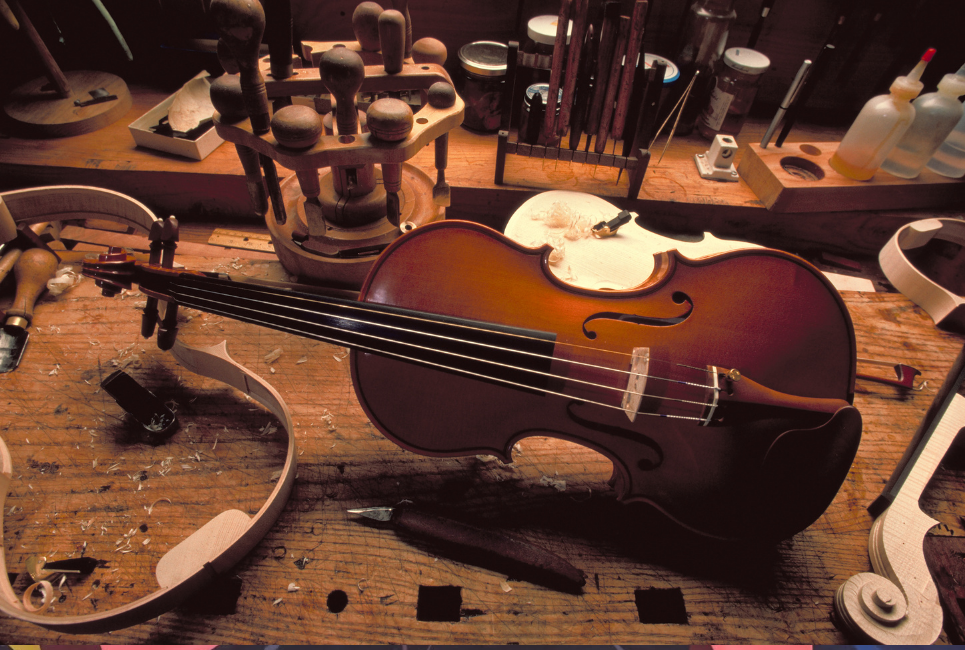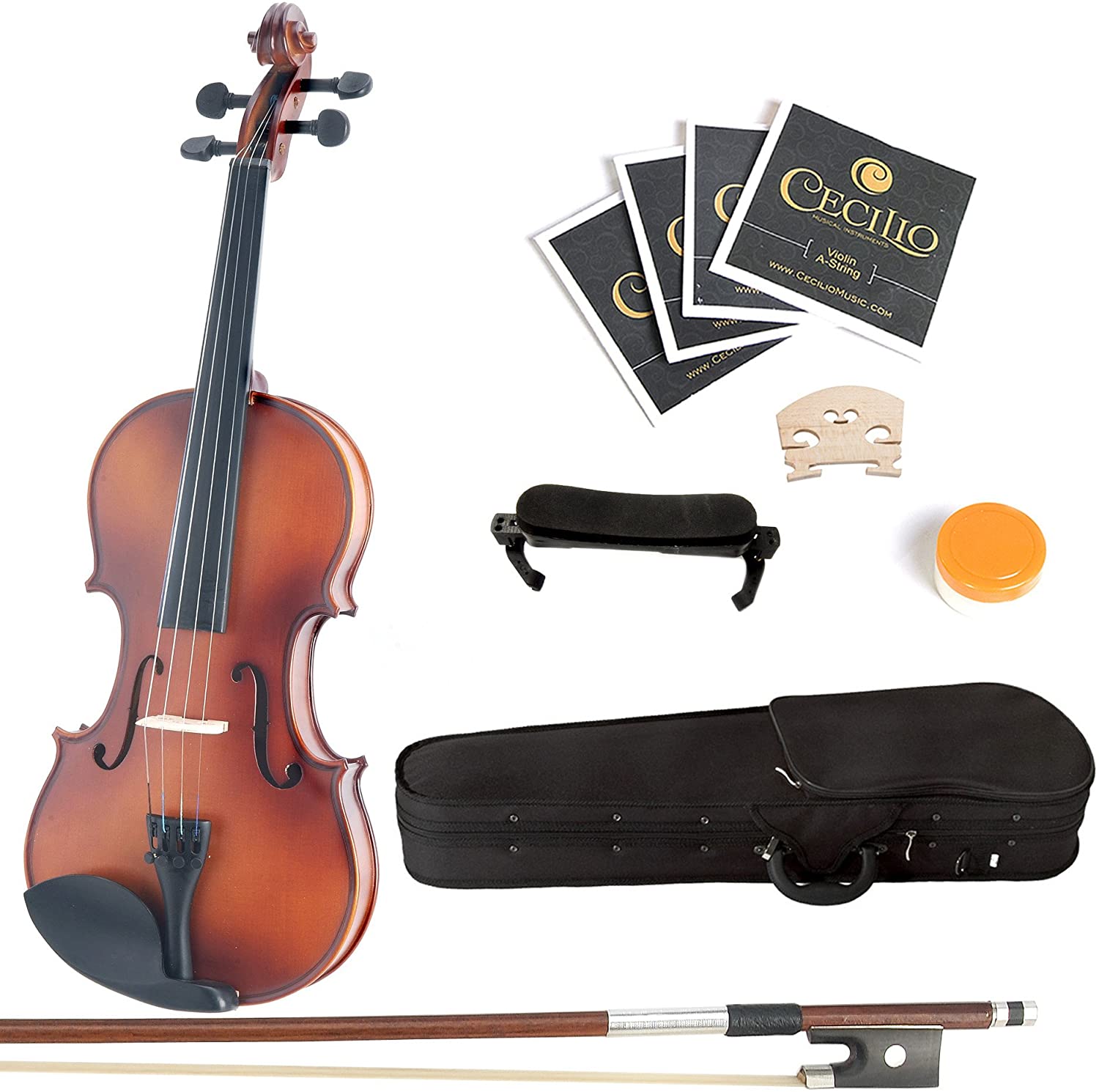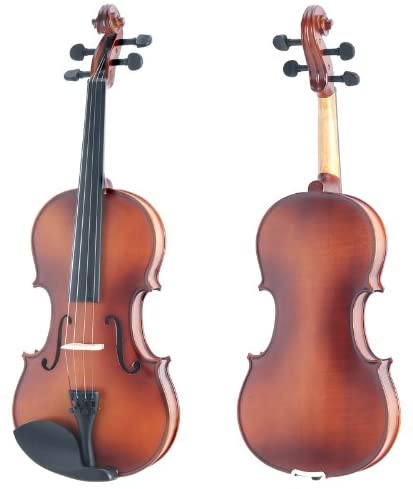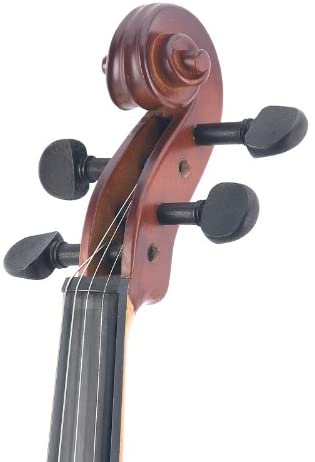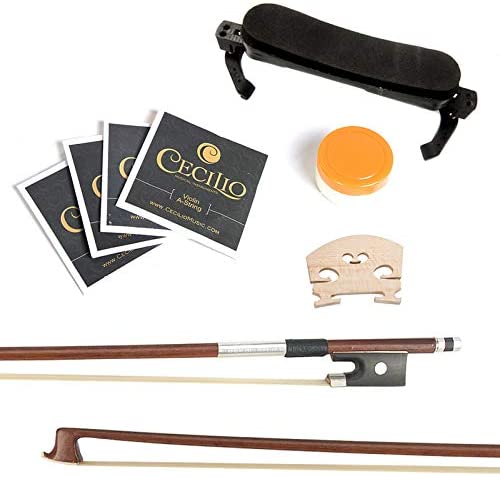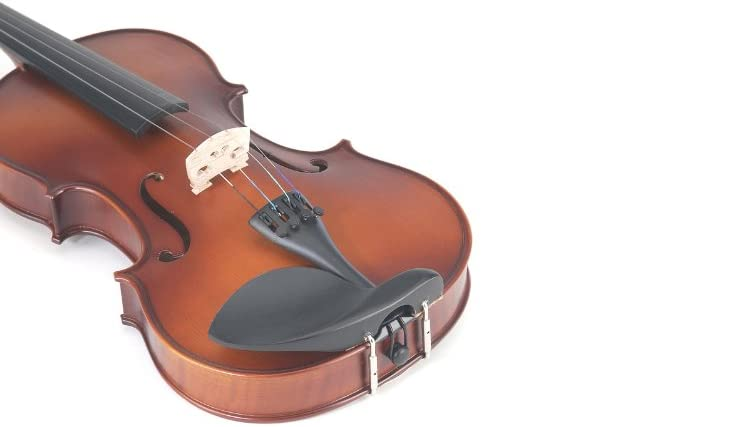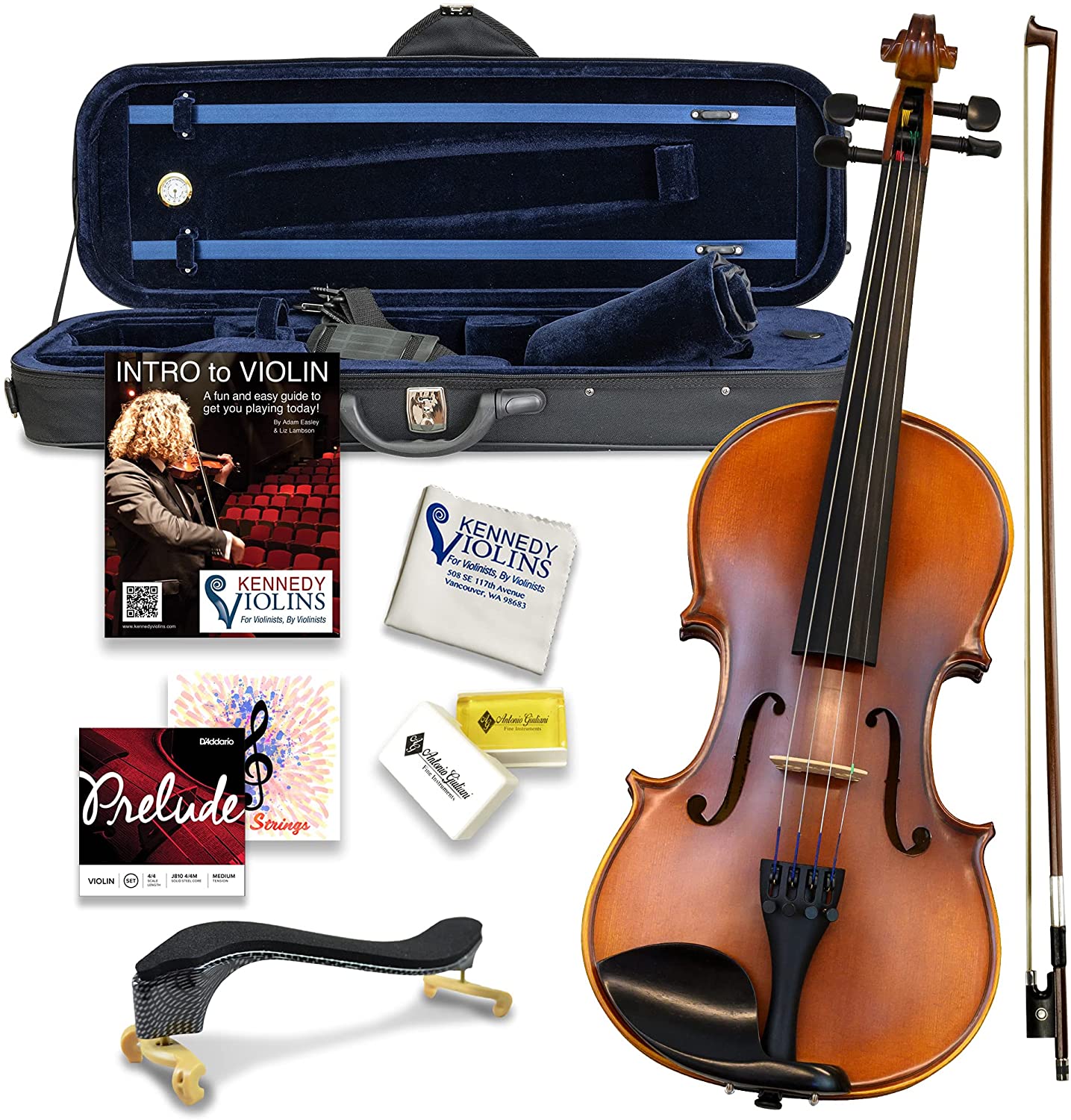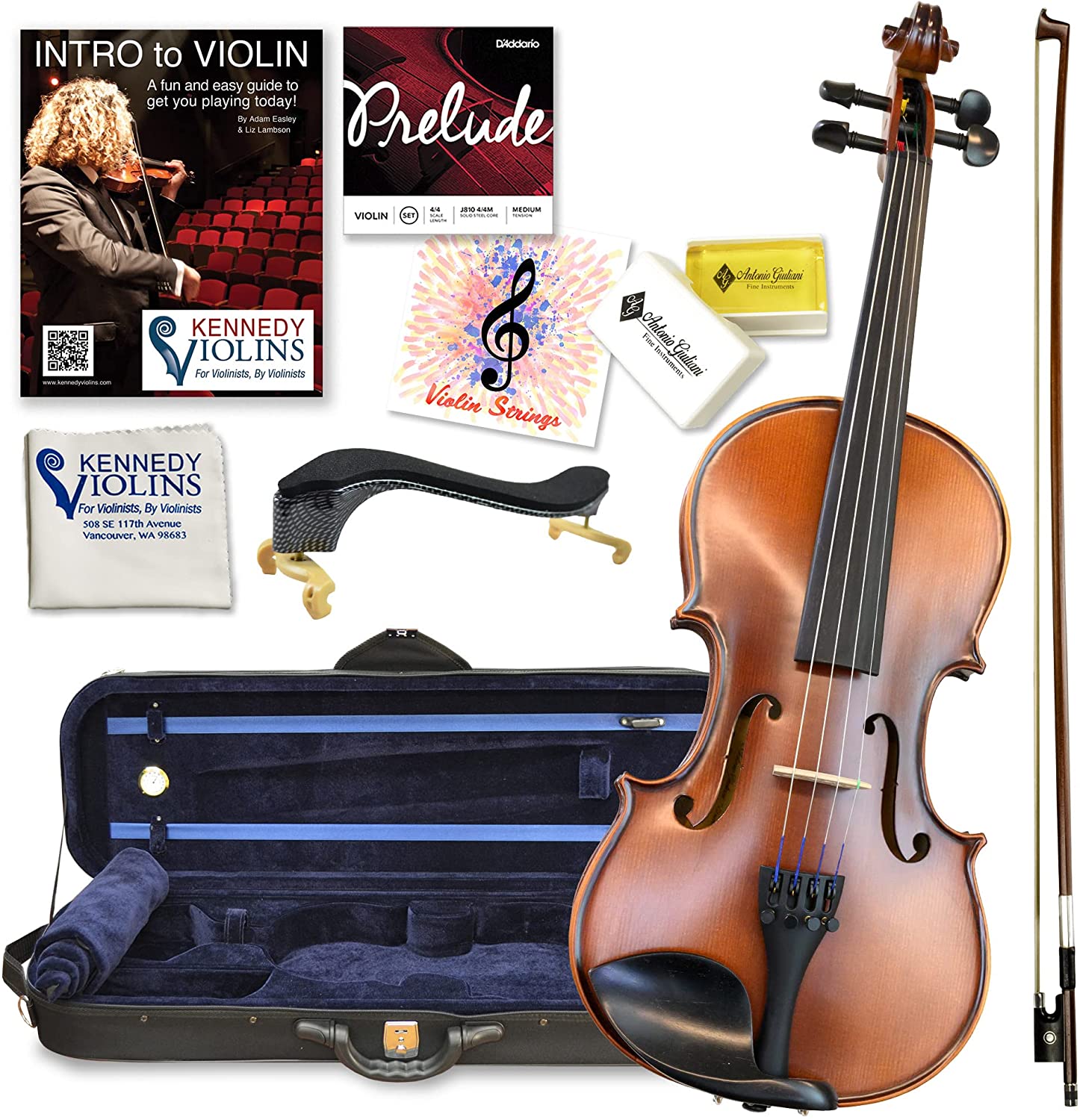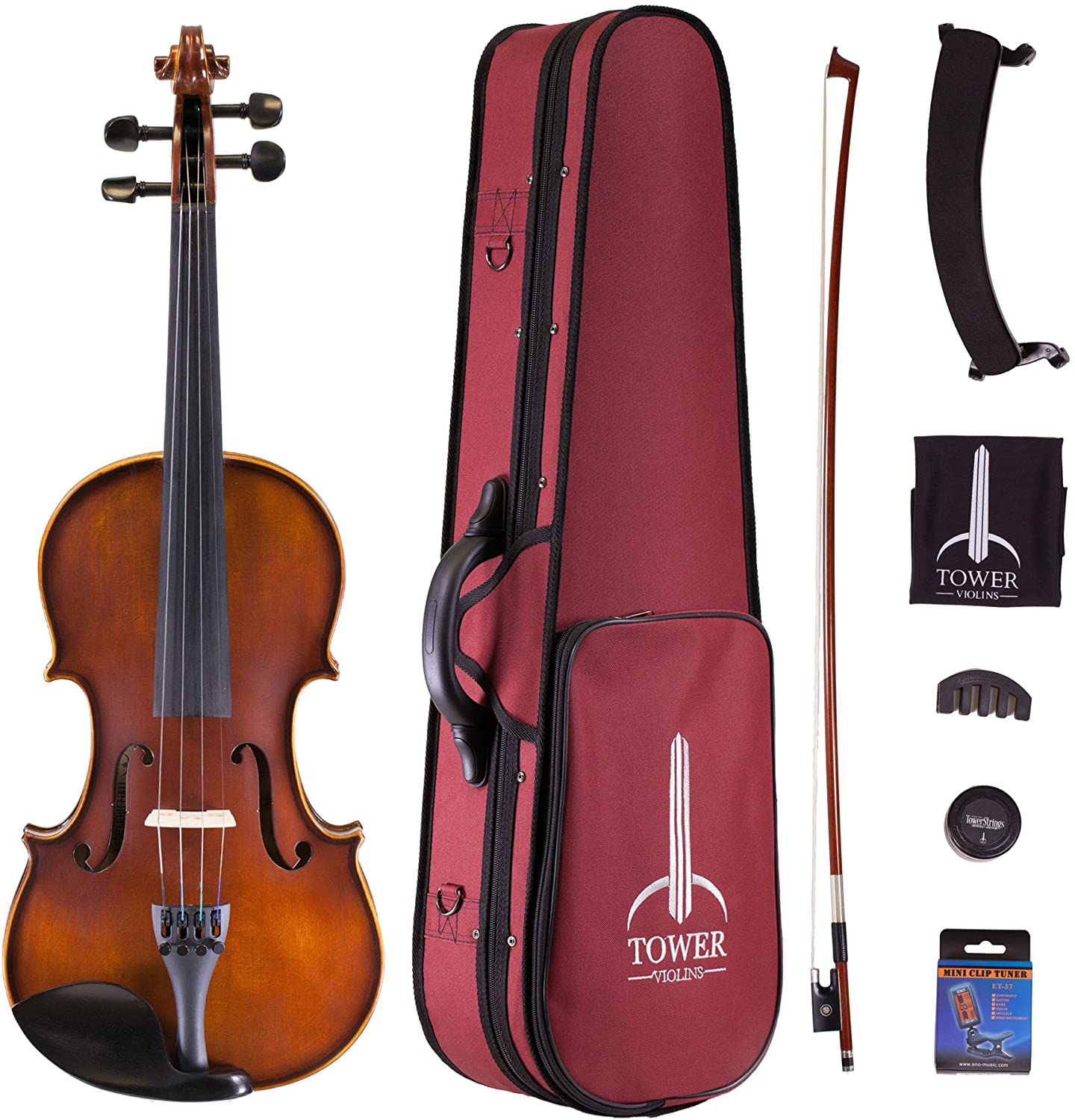- Mendini MV300: An Honest Breakdown and Review - April 6, 2022
- Cecilio Viola Review and Guide: 3 Violas, Which is the Best? - January 21, 2022
- Cecilio Electric Violin Review and Guide: A Silent Practice Violin! - January 20, 2022
Cecilio and Mendini have carved out a niche for themselves within the student instrument industry, offering cheap, usually workable instruments on places like Amazon, eBay, and other online retailers. Their lineup has changed over the years, and so have the people that recommend them.
Those that once applauded their efforts have either moved on to recommend other higher-quality instrument lines or create their own. However, despite their loss of favor within the musical community, they continue to be among the highest sold student instrument on Amazon due to their lost cost and attractive instrument package.
Many of their instruments are highly rated as well; take the MV300 coming in at four stars. The problem is that many of these reviews come from people who aren’t knowledgeable about violins, how they are made, or what goes into creating a quality violin.
Luckily I’ve played the violin for about a decade; my first violin was from Cecilio, the sister company to Mendini. In my search for my first violin, I sifted through every Cecilio and Mendini violin, hoping to find a winner. Stick around to find out what I thought of the MV300.
Pros, Cons, and Bottomline
The MV300 is extremely affordable, coming in under 130 dollars, but you make several sacrifices for the cost. The MV300 meets the essential criteria for what one could consider a student instrument; however, due to the material quality, improper setup, and poor quality control, it’s difficult to rely on the MV300 and Mendini as a whole as a consistent brand.
This is why I rarely recommend a Cecilio or Mendini instrument without a few important disclaimers.
They have their place in the instrument world, and for some, it’s the only way they can afford to learn an instrument. That’s why I still want to make sure you get the most out of your violin if you have an MV300 or other Cecilio/Mendini instrument.
However, I’ve also included a few alternatives to check out that will, in the end, beat any Mendini or Cecilio violin in both price and quality.
Pros
- An affordable instrument with all the goodies
- It can be a good backup if bought by someone who can set up the violin and has a better bow already.
Cons
- Poor instrument setup, leading to more money spent on repairs
- Low-quality accessories that need replaced quality
- Poor quality materials used during construction
- You will need to purchase and install new strings right away
- Needs the bridge setup and inspected by a luthier before playing
How the MV300 Compares to Quality Student Violins
A violin is made up of a number of different parts, each important in its way. From the tonewoods to the setup, the materials chosen and how they are crafted or applied affect the tone and playability of the violin.
While student violins typically aren’t made with fancy tonewoods or extremely expensive fittings and strings, they should be well crafted, carefully set up, and come with accessories that will serve the student for at least a year or two.
The MV300 does none of these things particularly well; the allure is mainly in the price. However, some things can bring out the full potential of this violin.
Tonewoods and Construction
Violins and most orchestral strings are made from spruce and maple. Student violins, including the MV300, typically use basic wood sourced from China and are generally unaged.
Aged tonewoods provide a more sophisticated tone to the violin right away, but it’s unnecessary for students. However, my concern is not with the type of wood used but instead with how it is carved.
Occasionally cheaper violins will be carved with thinner wood which can sound better at first, but in the long run, the tone will degrade over time and become screechy and tinnier.
Something I noticed with my own Cecilio violin, while I improved the tone of my violin slowly became squeakier and more challenging to play. I saw the difference quickly when I played my new violin.
The rest of the violin’s construction includes the fingerboard, neck, scroll, and varnish. The fingerboard is the most critical part; I’ve seen student violins made from ebony and maple.
The MV300 uses a maple fingerboard, which works for this level of a violin. I prefer ebony; it’s more durable against dirt, oil, and the pressure created against the wood with the strings. However, this violin will need to be replaced before the fingerboard will have a chance to show wear, so it doesn’t matter.
The varnish on this violin varies; the antique and satin antique is the most traditional looking but looks fake and plastic. The other finishes offered are black, pink, blue, purple, and white; however, not every color is shown in every size. This can be great to entice a young child to practice but is typically the mark of a poor-quality violin.
Violin Setup
Outside of the tonewoods, the setup most influences the violins’ overall tone and playability. The setup includes the fittings, strings, and the bridge. The fittings include the tailpiece, pegs, and end button. These can be made from various materials; I favor rosewood and ebony. The MV300 uses ebony fittings with an alloy tailpiece.
In my experience, the pegs constantly slipped, which is a sign of improperly fitted pegs, along with hairline cracks that started to appear rather quickly near the string hole.
The alloy tailpiece is fine, but I hate the built-in fine tuners. I’m not a fan of built-in fine tuners in general or fine tuners in general. I prefer geared pegs that work like guitar pegs. However, that type of hardware is best left to a higher quality violin you will use for a long time.
Fine tuners allow players to get a precise tuner easier than pegs, which is useful for young students. The fine tuners on my Cecilio tailpiece broke very quickly despite regular use.
This requires either a replacement of the fine tuner, but typically the entire tailpiece is recommended. This isn’t an expensive repair but an unneeded one nonetheless.
Most student violins come with student-level strings, typically D’Addario Preludes or occasionally Thomastiks Dominants. The MV300 comes with in-house strings, which I advise are changed immediately.
If they don’t break the first time, you try to tune them. I recommend purchasing some D’Addario Preludes for around 25 dollars; these are the standard student string and some of the cheapest quality strings on the market.
The most important part of the setup is the bridge, which is also the area in which Cecilio/Mendini manages to fail the most.
A violins bridge is typically made from maple and carved precisely to allow the feet of the bridge to sit flush against the curved top of the violin and for the strings to sit at a specific height and distance apart for the best tone and playability.
The MV300’s bridge may need to be replaced, but at the very least, a skilled luthier will need to inspect it and set it up properly. Mendini ships their violins with the bridge down to protect the violin, which it does.
But this leaves a new player left to set the bridge themselves; while not the most challenging task, it’s essential it is set correctly. Otherwise, you will struggle to produce a good tone or feel comfortable while playing.
Accessories and Outfit
The last part of a student violin and potentially one of the reasons Mendini is so enticing is the accoessires that come with the violin. Most student violins come in an outfit that, at the very least, comes with a case, bow, and rosin. More often than not, student violins come with many other goodies as well. The MV300 comes with all the basics and a shoulder rest.
The case is a basic triangle which is pretty standard. There is hardly any storage space, but it’ll work for the life of the violin. The bow is the biggest issue with the outfit; it’s a basic brazilwood bow.
Unfortunately, the stick may come warped or unbalanced. The horsehair is usually the most significant point of failure simply due to its quality. Mine shed quickly, which for a beginner is unusual, and meant I needed a new bow quickly. I recommend upgrading to a carbon fiber bow; Fiddlershop makes my favorite version and one of the cheapest on the market.
The rest of the outfit includes a poor quality shoulder rest which will also need an upgrade. Fiddlershop makes a tremendous lightweight shoulder rest, but I also like Everest’s shoulder rests. They come in various colors and are super comfortable and well made!
The MV300s Tone and Overall Thoughts
The tone of the MV300 is pretty basic; it doesn’t have a personality or specific tone; by that, I mean the violin doesn’t register as brighter or darker. It’s just kind of there; with that said, the overall tone isn’t terrible. I like the lower register, but I find the upper register a little squeaky and unpleasant.
You could adjust this by getting a different bow and changing the strings to something of higher quality. But, overall, you can’t give this violin a personality or improve the tone all that much.
While this violin may serve a new student for a few years, they will quickly outgrow it. But the biggest issue is that while getting the violin may be inexpensive, by the time you get new strings, a new bow, and shoulder rest, you could have bought a higher quality student violin package from another retailer and brand.
If you take this violin in to be properly inspected and set up, you are adding even more to the overall cost. While you can skip the last step, it could greatly hinder your ability to play this violin comfortably or get a good tone from it.
Which just leads to frustrations and discouragement. Unless you just want a cheap violin to mess around with, I recommend getting a better violin either by renting or checking out my alternative picks below!
Alternative Recommendations
Bunnel Premier Violin Outfit
The Bunnel Premier Violin Outfit by Kennedy Violins is a high-quality student violin outfit from a violin retailer on the West Coast. Their instruments are made from high-quality materials, and they use many of the exact fittings and accessories that my favorite violin retailer uses.
But what I love the most is that their violins come entirely set up with D’Addario Prelude strings and are ready to play out of the case, along with everything you need to get started.
The violin is made from solid spruce, and maple with hand oil rubbed varnish. The fingerboard and fittings are ebony with and carbon tailpiece.
The tailpiece has four built-in fine tuners, but I trust these, as they are similar to the ones I have on my electric violin, which hasn’t failed me yet. The outfit includes a sizeable roomy case with plenty of storage space and a hygrometer for humidity tracking.
A high-quality brazilwood bow, rosin, lightweight shoulder rest similar to the FIddlerhsop shoulder rest, and an intro to violin book make up the rest of the outfit.
This violin outfit is more expensive upfront, but you will receive a violin that will last you for several years and won’t require replacement accessories or repairs right away.
If you want a darker-looking violin, check out the Bunnel Pupil which is the same except for the varnish!
Antonio Guiliani Violin Outfit
It’s slightly more expensive than the Premier. However, it’s a well-crafted violin with a perfect upgraded setup that will give a student the ideal start for a long career made from the tight-grained spruce and maple sourced from the Himalayas that have been naturally dried.
It comes fully set up with an upgraded French Aubert bridge and an ebony fingerboard, fittings, and a composite tailpiece with four built-in fine tuners.
This outfit comes with the same accessories as the Bunnel line but with an extra set of in-house strings. I’ve never had the pleasure of using them, so I can’t give an opinion on if they are worth keeping around, but backup strings are backup strings.
If you want to save a little money, look for a clearance listening for this violin. These are discounted B stock violins with minor blemishes but are entirely playable.
Tower Strings Entertainer Violin
Fiddlershop is my favorite violin retailer, with Kennedy a close second. They operate similarly, but Fiddelrshop is very transparent about their practices, and I’ve been buying from them for several years.
I’ve owned a variety of their products, including one of the electric Tower Strings violins. Their entry-level student line is more expensive than Mendini but is much higher quality and will last you a lot longer. All of their instruments come ultimately setup
The violin is made from spruce and maple aged for two years, ebony fingerboard and fittings, and a composite tailpiece with four built-in fine tuners.
These are the ones I have on my electric violin; they work great and have held up for five years thus far. The violin outfit comes with a brazilwood bow, rosin, shoulder rest, practice mute, and tuner. I still use the mute, rosin, and bow occasionally and upgrade the shoulder rest.
FAQs
Answer: Cecilio violins are manufactured and partially set up in China. I’m assuming that is also where they source their tonewoods and other materials for their violins. Many student violins are manufactured in China, so this isn’t unusual. It’s all about the care and attention paid to the instrument and its construction and setup.
Answer: This is an age-old question that will get various answers, and the answer is different for everyone. I recommend renting if you are okay paying a monthly payment and using only a portion towards purchasing your own violin. Typically about half of your monthly rental payment minus any tax and insurance fees will go towards buying your own violin.
The terms will vary depending on the store, and I recommend always purchasing insurance if it’s not included. Online retailers with rentals include Shar Music, Johnson Strings, Kennedy Violins, and Music and Arts.
I chose to purchase my first violin because I was a college student at the time, and I was moving on a regular basis. I didn’t want to be responsible for a rental when I wasn’t in one place and had roommates.
I also didn’t like the idea of a monthly payment and chose to save for my violin instead. Once I settled down in one place and felt more comfortable with an extra monthly payment, I rented a higher quality Eastman violin.
Answer: This is subjective; you can spend anywhere from $250 to over 1,000 on your first violin. If I could buy any student violin as my first violin, I would probably aim to spend a little under 500 on the Fiddlerman Apprentice Violin. However, given my finances at the time, I would have settled for the Tower Strings Entertainer for $250 or the Bunnel Premier for $280.
Final Thoughts
Overall the MV300s price reflects its quality. With some adjustments, you will have a playable violin for a few years, but ultimately you will put more money into the violin than it is worth.
Paying more upfront will guarantee you will get a higher quality violin that is playable out of the case and won’t require repairs or new accessories so quickly. I recommend purchasing a higher quality violin from Kennedy Violins or Fiddlershop. Some other retailers to check out include Shar Music and Johnson Strings; these guys also offer rentals!
Looking for more interesting readings? Check out:

